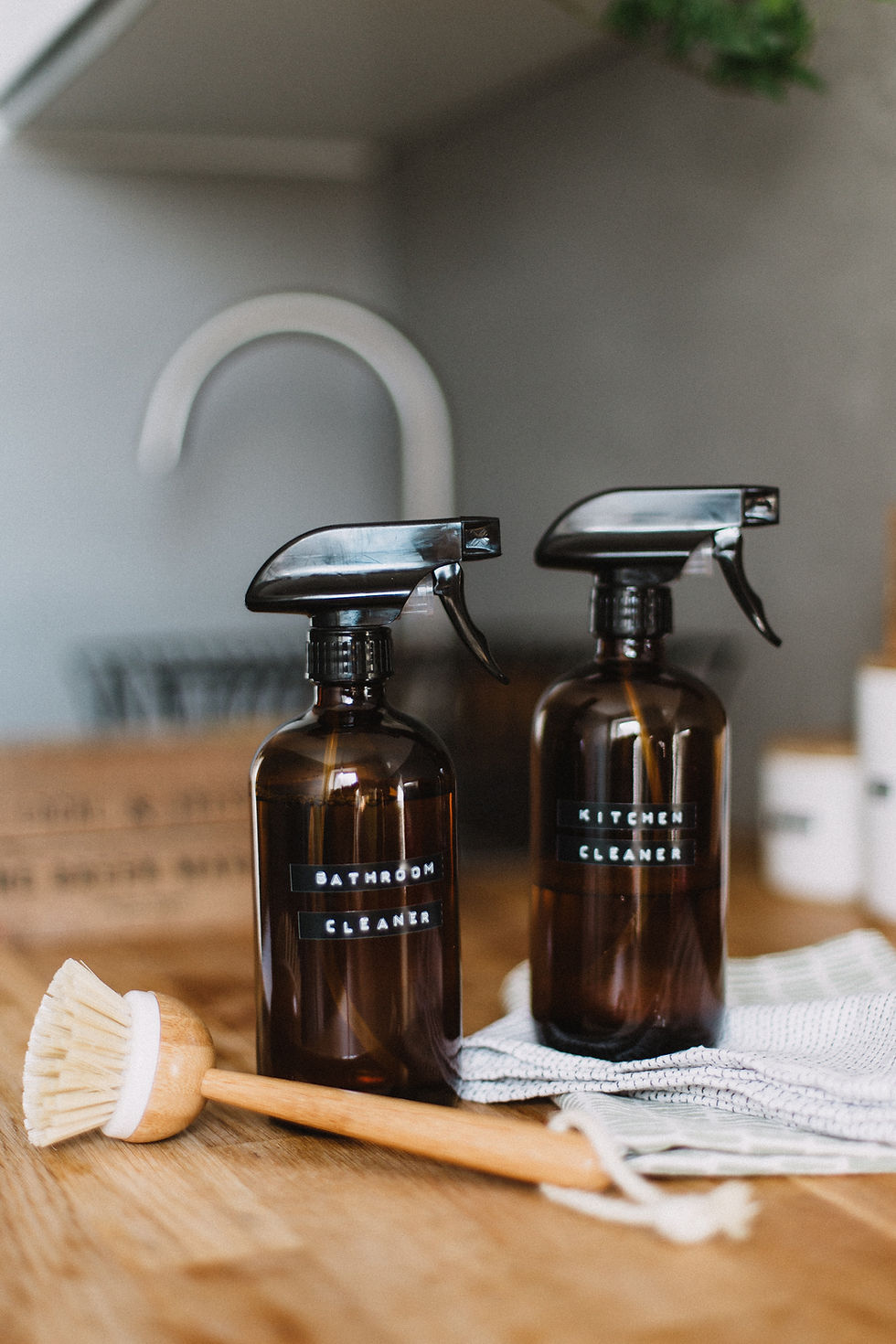
Nowadays we are getting more and more informed about what we are applying to our skin and the consequences we already know they might produce after a long term use. Therefore we are more aware about cosmetics, and we pay much more attention to what we buy and apply to our body.
But what about household cleaners, air fresheners, candles, melting waxes and so on? Are we truly paying attention to them? Do we really read the labels? Do we find any descriptive labels on them?!
In my experience I find very difficult to find out which is their composition. There is a big lack of information in this particular industry, and we've also been constantly brainwashed with amazing adverts that indoctrinate us to believe this products deliver the results we're looking for, in a safe, lovely, happy and magical way. NO WAY!
My mission here is not to freak you out. My mission is always to give you the most powerful tool: information. It is with knowledge, we free ourselves from the bonds of ignorance and make possible to reach better decisions and choices.
In this article I want to encourage you to come back to the basics. Why? because it is clever, smart, inexpensive and effective. In this first article I am providing the information of the 3 main old household cleansers. By using them separately you wont need more ingredients to clean your whole house. Discover what are they and for what to use them:
1.Vinegar (acid) is a liquid consisting of about 5-20% acetic acid, water and other trace chemicals. The acetic acid is produced by the fermentation of ethanol[*].Historically, as the most easily available mild acid, it had a great variety of industrial, medical and domestic uses, some of which (such as its use as a general household cleanser) are still promoted today. Commercial vinegar is produced either by fast or slow fermentation processes. In general, slow methods are used with traditional vinegars, and fermentation proceeds slowly over the course of months or a year. The longer fermentation period allows for the accumulation of a non-toxic substance composed of acetic acid bacteria. Fast methods add mother of vinegar (bacterial culture) to the original liquid before adding air to oxygenate and promote the fastest fermentation. In fast production processes, vinegar may be produced in 20 hours to three days.
[*]Ethanol, also commonly called ethyl alcohol, drinking alcohol, or simply alcohol is the principal type of alcohol found in alcoholic beverages, produced by the fermentation of sugar cane by yeasts.
Good at: removing lime, soap scum, eliminate bad odours, remove rust, as a rinse-aid, kill bacteria and germs, fabulous deodorant and softener, helps maintaining colours from fading, and amazing degreaser as it is an acid.
2. Baking Soda (base/alkali) or Sodium bicarbonate (sodium hydrogen carbonate) is a salt composed of sodium ions and bicarbonate ions. It has a slightly salty, alkaline taste resembling of soda ash or washing soda (sodium carbonate). The natural mineral form is nahcolite.
Good at: Baking soda is a base. Bases are also good cleaners, and baking soda in particular seems to have no end to the things it can be used for. It’s been recommended as an air freshener, antacid, carpet cleaner, toothpaste, deodorant, laundry soap booster, surface soft scrub, polish silver flatware and more.
3. Bleach (base) Although it used to be obtained by wood ashes mix into water producing a lye water which can either be mixed with fats to create a soapy substance, or used all by itself as a bleach. The actual bleaches are mostly sourced from chlorine, or/and hydrogen peroxide. They are highly disinfectant and whitening products. Conventional bleach is a very tricky product as it can cause some allergies to sensitive people due to the chlorine, and respiratory problems due to the fumes when it is mixed with an acid. Thus I recommend you to switch to an organic bleach (click here to learn how) If you are not very sure about using this product you might want to create an equivalent by diluting tea tree essential oil with white vinegar, although it wouldn't act as a whitening. In conclusion, if you don't have the time to make your own organic bleach and you're buying one at the supermarket try to keep its use to a minimum, always diluted in water, never mixed with anything else but natural soap. With a small amount you'll reach the same results and you'll be more sensible with yourself and our planet :)
Good at: killing germs and bacteria and as whitening agent.
What about mixing them? a little bit of chemistry here...
I wouldn't recommend it.
First of all, the majority of what is left over from an acid-base reaction is usually water. And while sodium acetate (baking soda + vinegar) itself might not have many cleansing properties due to its chemistry, water does. It’s called the “universal solvent” because most compounds can be dissolved in water. This means that plain old water is itself a powerful cleaning agent.
Second, the sodium acetate can act as an abrasive that works to scrape away stubborn residues. However, you could easily get the same result by mixing water with plain table salt.
In the case of mixing baking soda and vinegar, the results are harmless. But other mixtures, like ammonia and bleach can create toxic and even explosive results. Watch out and use them separately and you will get the best of them.
Above all, the most important rule is ALWAYS wear gloves! When using organic or not organic cleaners you must protect your skin, and consequently your health, by wearing a pair of gloves. If you like to have a better touch feeling use disposable gloves for tough duties ;)
[to be continued... next week recipes and tricks to make household cleaners smelling divine!]
Sonia x

